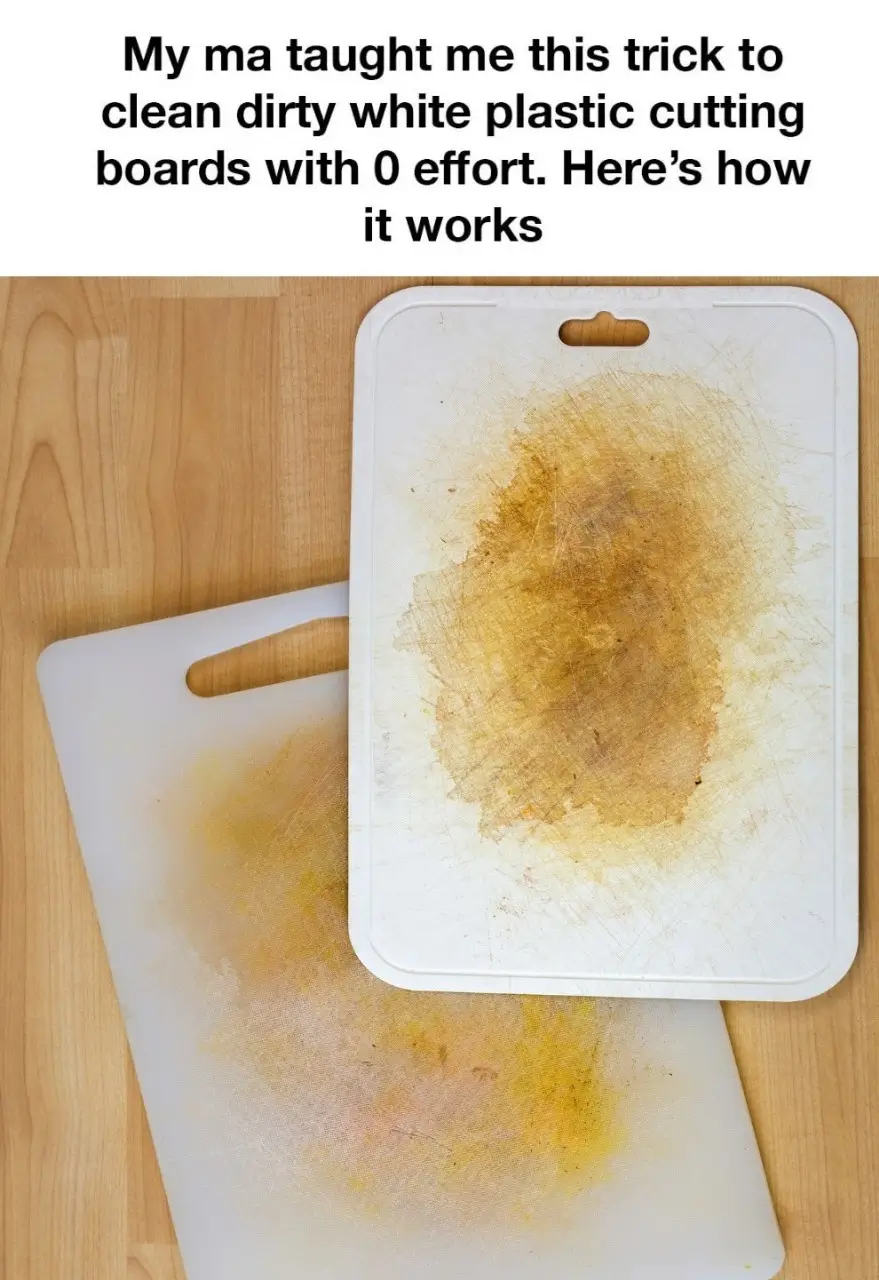White plastic cutting boards are a staple in most kitchens due to their durability, light weight, and versatility. Whether you’re chopping vegetables or slicing meat, they’re a kitchen essential. However, they can quickly stain and absorb odors.
Over time, regular cleaning may not keep them looking pristine. Don’t worry! I’ve got a simple cleaning trick from my mom that requires minimal effort and works wonders on dirty cutting boards.
Why Do White Plastic Cutting Boards Get Dirty?
Before we dive into the solution, let’s understand why your cutting board gets so grimy. The plastic’s porous surface tends to soak up food juices, oils, and dyes. Foods like tomatoes, carrots, turmeric, and beets leave stains that regular soap and water often can’t remove.
If left untreated, these stains can also harbor bacteria and unpleasant odors, making your board less hygienic.
The Cleaning Trick My Mom Taught Me
The method my mom taught me is incredibly easy and uses basic kitchen supplies. Best of all, it requires no scrubbing or expensive cleaning products. Here’s what you’ll need:
- Baking Soda: A natural cleaner that lifts stains and neutralizes odors.
- Hydrogen Peroxide: An antiseptic that kills bacteria and helps remove stubborn stains.
- Dish Soap: Great for cutting through grease and food residues.
Step-by-Step Guide to Clean Your Cutting Board
1. Gather Your Supplies
Get your baking soda, hydrogen peroxide, and dish soap ready. Make sure your cutting board is dry before you start.
2. Sprinkle Baking Soda
Place your cutting board flat and generously sprinkle baking soda over the surface. Its mild abrasiveness helps lift stains while neutralizing odors.
3. Add Hydrogen Peroxide
Pour a small amount of hydrogen peroxide over the baking soda. This creates a paste that helps bleach the stains and lifts them from the surface.
4. Add Dish Soap
Add a few drops of dish soap to the mixture. It helps break down grease and food residue, boosting the cleaning power.
5. Let It Sit
No need for scrubbing! Let the mixture sit on the board for 10-15 minutes. During this time, it will work to lift stains, kill bacteria, and remove any odors.
6. Rinse Thoroughly
After the waiting period, rinse the board with warm water. Use a sponge or cloth to wipe away any leftover paste, and you’ll notice the stains have significantly reduced.
7. Dry Completely
Finally, dry the cutting board with a clean towel or let it air dry. This prevents any bacteria or mold from developing.
Why This Method Works
- Baking Soda: Its mild abrasiveness gently scrubs away stains and neutralizes odors.
- Hydrogen Peroxide: A natural bleaching agent that safely whitens and disinfects.
- Dish Soap: Effectively cuts through grease and food residue, making the cleaning process easier.
This combination of ingredients works together to lift stains, kill bacteria, and deodorize your cutting board with minimal effort.
Extra Tips for Keeping Your Cutting Board Clean
- Clean After Each Use: Rinse with hot water and soap immediately to prevent stains from setting in.
- Avoid Harsh Scrubbing: Use gentle sponges to preserve the surface of the board.
- Sanitize Regularly: Rub a cut lemon on the board or spray it with vinegar to naturally disinfect.
- Hand Wash Only: Avoid the dishwasher to protect the shape and longevity of your board.
Conclusion
Keeping your white plastic cutting board clean doesn’t have to be a hassle. With this simple method from my mom, you can easily remove stains and odors while maintaining hygiene.
Try it next time your board looks worn, and you’ll be amazed at the difference. Keep your cutting board looking fresh with minimal effort!
